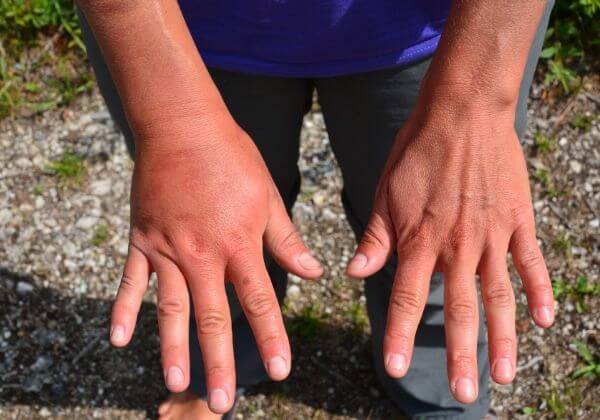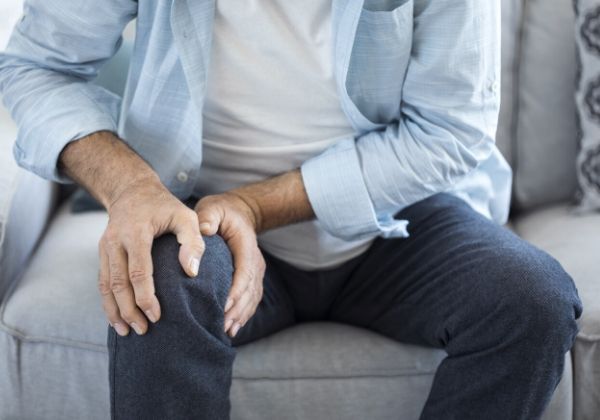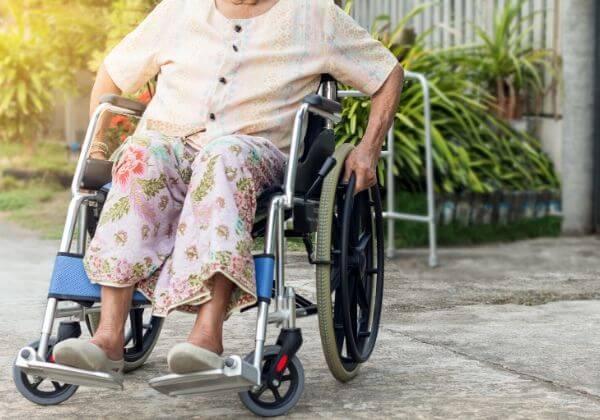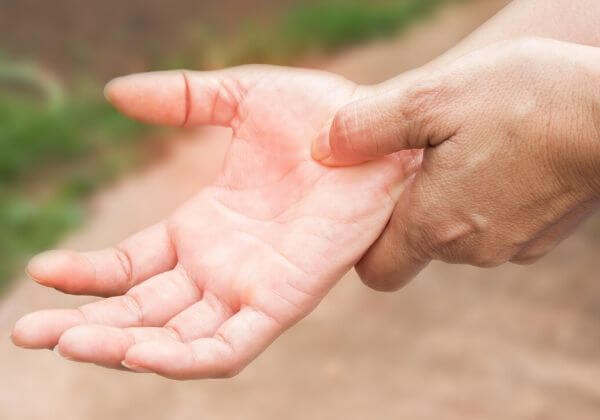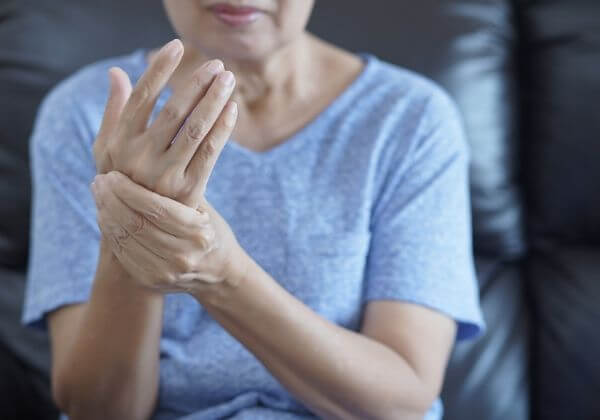Osteoporosis is a bone disease that is marked by enlarged spaces within the bones. Your bones have a honeycomb-like network within them, and when these spaces become enlarged and your bone loses strength and density, they become weaker and more brittle. This makes the risk of breaks and fractures much higher.
While osteoporosis is more common among elderly adults, it can develop at any age.
Age is the number one cause of osteoporosis. Your body gets older and is unable to grow new bone to replace the bone wearing down. After your 30’s, your body breaks down bone much faster than it can repair it, and your bone becomes less dense and more prone to damage.
Menopause is another cause of bone loss in women between the ages of 45 and 55, and this is mostly due to hormone level changes. Men lose bone density too, but at a much slower rate than women. Once adults of any gender are 65 in age, bone density loss occurs at about the same rate.
Other conditions like hyperthyroidism can also cause osteoporosis as well as the use of certain medications. Long-term use of corticosteroids has been linked to bone density loss. A lack of vitamin D and other bone-health promoting nutrients can also be to blame for weakened bones.
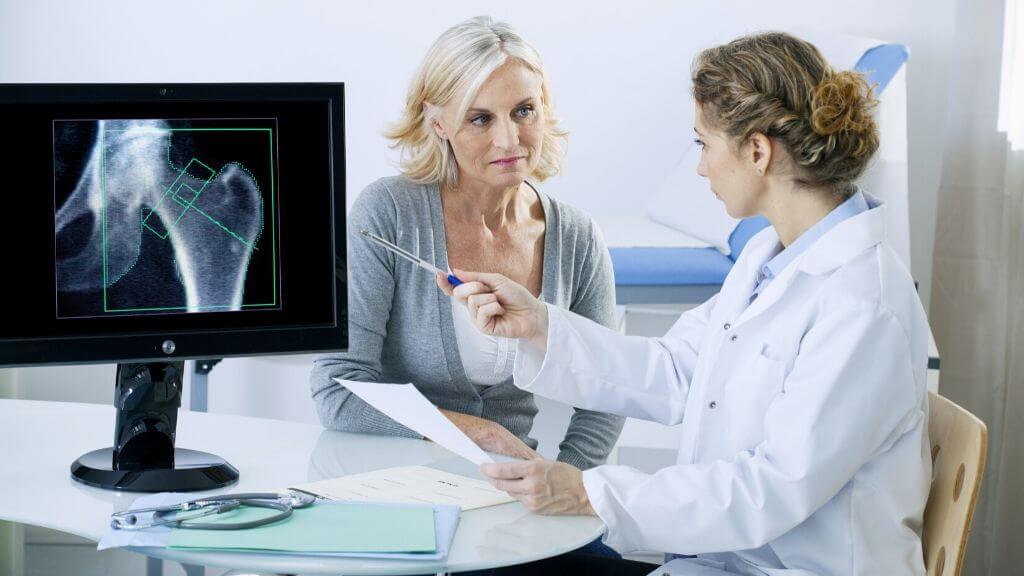
In the early stages of the disease, there are no symptoms, and it can go unidentified until a fracture occurs. If there are any symptoms they would include:
♦ Receding gums
♦ Weak and brittle nails
♦ Weakened grip strength
When the condition becomes more severe, and your bones become weaker, the symptoms will include fractures and breaks that happen with regular activity. You may also notice back and neck pain as well as loss in height and stooped posture. These occur as a result of a compression fracture when one of your vertebrae breaks from being too weak to support the spine.
Bone density testing is used to diagnose osteoporosis. Your doctor will also review your history and conduct a physical exam. They may also check your blood and urine for other conditions that may contribute to bone density loss.
Bone density testing is done on the wrists, hips, and spine as these are the most commonly affected areas, and once diagnosed, a treatment plan will be devised.
The typical treatment for osteoporosis prevention lies in medications and lifestyle changes. There is no cure, but treatment can help strengthen your bones and protect from further damage. Some treatments can even encourage the growth of new bone.
♦ Bisphosphonates are the class of drugs used for osteoporosis, and they work to prevent the loss of bone mass. Prescription medications have been shown to be the most aggressive way to treat osteoporosis. If fractures occur, then surgery is the best option.
♦ Your doctor will recommend you make lifestyle changes that include eating a better diet rich in both calcium and vitamin D, losing weight, quitting smoking, and performing resistance exercises to increase muscle and bone strength.
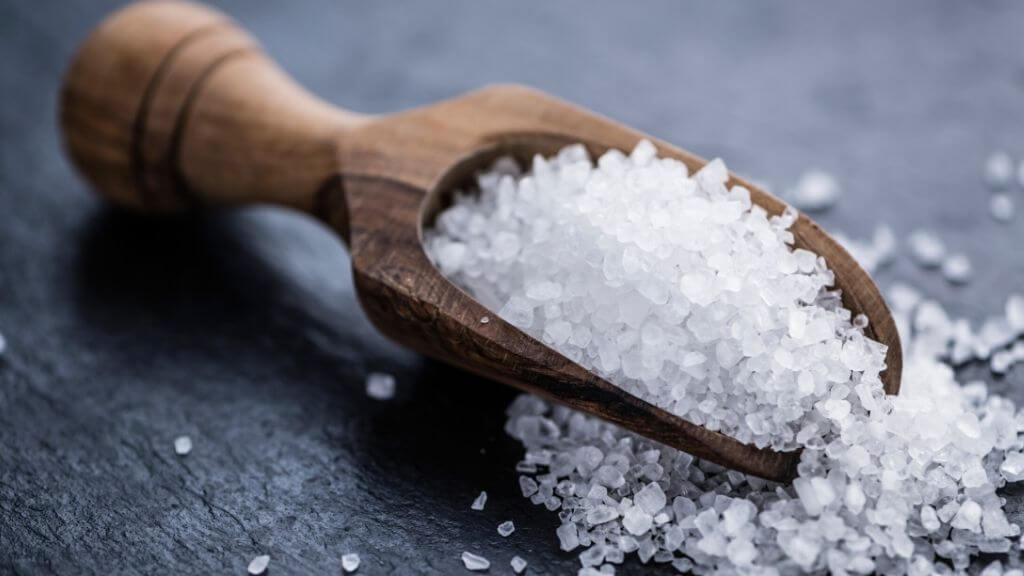
Foods containing vitamins D and K Vitamins, calcium, magnesium, and protein are great for osteoporosis. It is important to note that there are foods that are bad for this condition and can make symptoms worse.
♦ Salt contributes to calcium loss from your bones.
♦ Carbonated drinks containing phosphoric acid increase calcium excretion in your urine.
♦ Caffeine leaches calcium directly from your bones, doing almost as much damage as salt.
♦ Soy is full of bone-building protein but also contains compounds that bind calcium and prevent it from being absorbed by your body.
There are natural alternative treatment options that have been shown to help strengthen bones and prevent further damage.
♦ Black cohosh: This herb used in Native American medicine for years contains compounds that prevent bone loss (phytoestrogens).
♦ Horsetail: This plant contains silicon, which is known to stimulate bone regeneration. You can take this as a tea, herbal compress, or tincture.
♦ Supplements: If your diet is lacking in certain nutrients that promote bone strength, start taking vitamin D, calcium, and vitamin K supplements to avoid further bone loss or to prevent it in the first place.
♦ Acupuncture: This traditional Chinese practice stimulates organs and body functions to promote healing and is used successfully for the treatment of osteoporosis.
♦ Tai Chi: The gentle movements of this Chinese exercise increase immune system function, muscle strength, coordination, and balance. This can promote overall well-being as well as reduce the risk for falls that can cause bone fractures.
Surgery is only required when a break or fracture occurs as a result of weakened bones from the disease. The most common surgeries are for hip, spinal, and wrist fractures.
Hip fractures are serious and can take up to a year for a full recovery, and in some cases, complete hip replacement is needed. Spinal fracture surgery is minimally invasive and adds bone cement to restore height to your vertebrae. Wrist fractures are very common and are usually repaired with pins to hold fractured bone fragments back in place.
Osteoporosis can develop at any age, but there are circumstances where it is classified specifically based on age. Juvenile osteoporosis is seen in children, and senile osteoporosis is found in elderly adults over the age of 65.
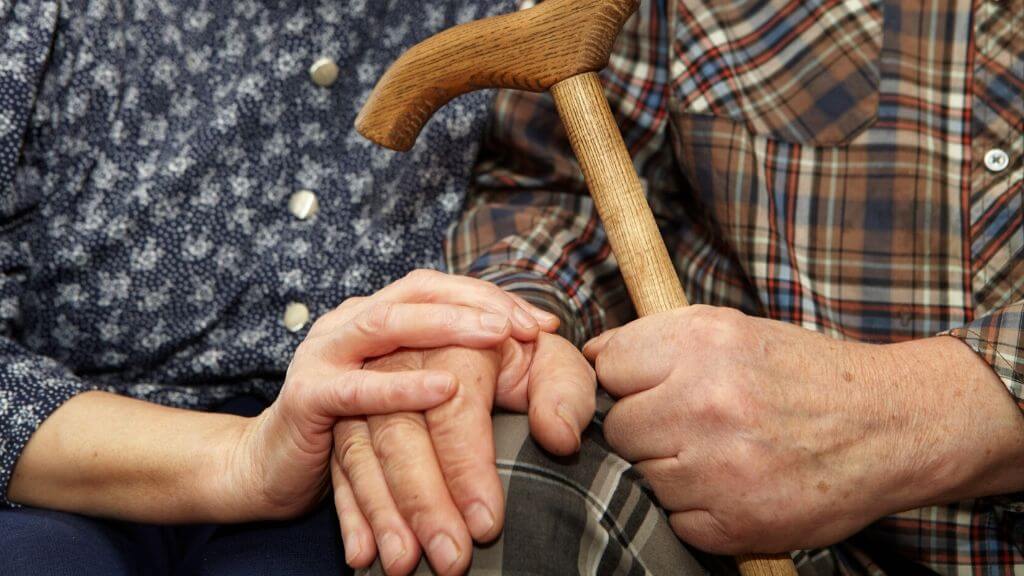
For it to be classified as one of these, the diagnosis needs to be made during the specific age range for each variety of the disease.
♦ Juvenile osteoporosis can be secondary, which is caused by another medical condition such as diabetes, cystic fibrosis, or leukemia, or idiopathic, which is uncommon, and doctors are unable to determine the cause.
♦ Senile osteoporosis is when the disease is specifically caused by aging. At its most basic level, this is osteoporosis that any adult can get, except that it is not diagnosed until later in life.
♦ Osteoporosis causes over 8.9 million fractures each year across the world.
♦ A prior fracture is associated with an 86 percent increased risk of another fracture.
♦ Nearly 75 percent of all hip fractures occur in women.
♦ Vertebral fractures due to osteoporosis are common, as one occurs every 22 seconds worldwide in both men and women.
♦ Osteoporosis has been shown in studies to have a large genetic component.
♦ Smoking can lead to lower bone density and a higher risk of fracture, and high intake of alcohol confers a significant risk of fractures.
Osteoporosis can develop in children but is much harder to define. The symptoms of juvenile osteoporosis include pain in the lower back and extremities, trouble walking, and leg or ankle fractures.
Doctors need to perform bone density scans to make an accurate diagnosis, and most cases are identified and diagnosed after a break from a fall or other trauma. Not all osteoporosis drugs are approved for children, and treatment lies in lifestyle changes to protect their bones and build strength.
Osteoporosis can have serious and lasting effects, including fractures and breaks that take a long time to heal. There is plenty you can do, including lifestyle changes, medications, and natural treatment options to both prevent and treat osteoporosis.
If you think you may be at risk for osteoporosis, discuss it with your doctor, get tested, and come up with a prevention or treatment plan to protect your bones.











